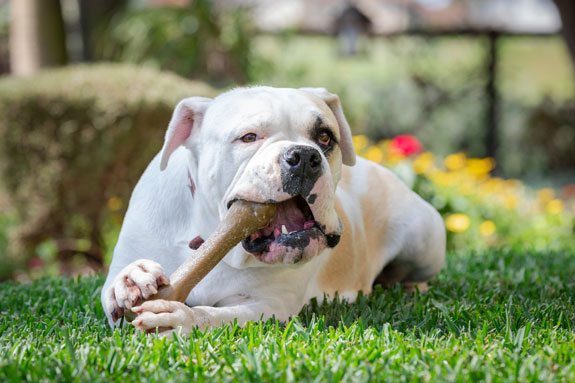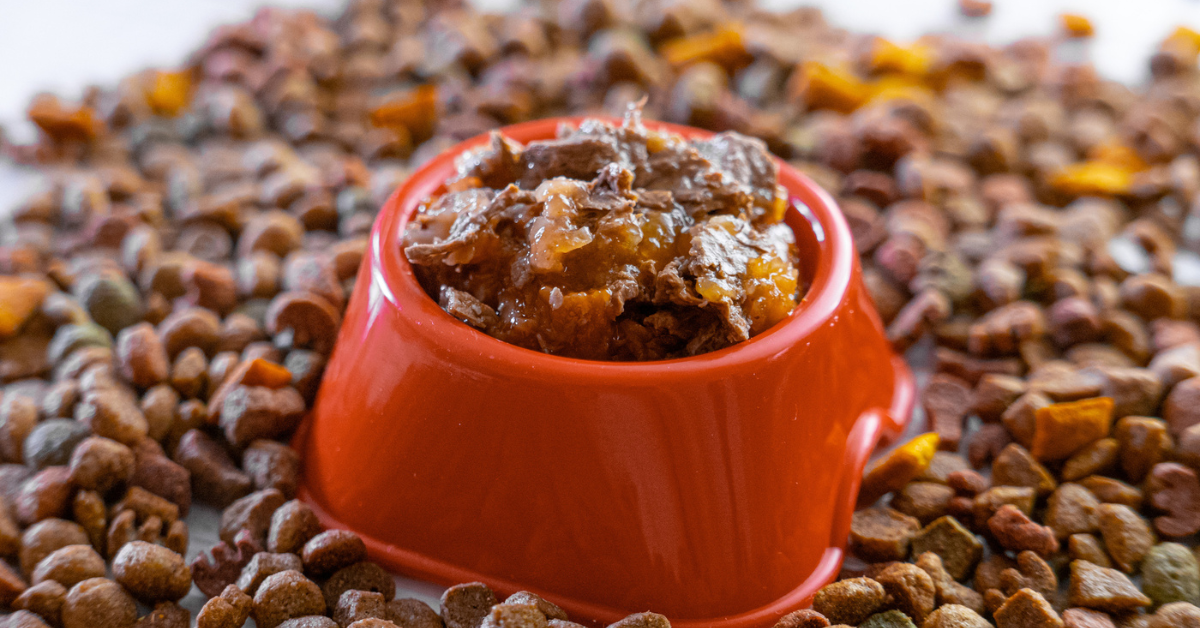Dental Disease in Dogs

Dogs have burrowed their way into the hearts of many people. With their sweet eyes and loyal nature, it is no wonder they are popular pets. However, just like humans, dogs require a healthy lifestyle to live a full life. The importance of dental hygiene for dogs has become an important topic for dog owners to be aware of.
Daily brushings and dental care are routines that most people can do with ease. However, for dogs who are unable to communicate the discomfort they are having, it is up to owners to advocate for their dog's health. It is important to know your dog's usual personality and behaviors and to watch out for some telltale signs of possible dental diseases.
POSSIBLE SYMPTOMS:
A few symptoms that might indicate your dog is suffering from dental disease include:
- Problems picking up food
- Bleeding or red gums
- Bad breath
- Not wanting head to be touched
- Loose teeth
- Making noises when eating
- Blood on chew toys or in the water bowl
There are only a few symptoms that could appear at home. If you notice any of these symptoms, it is best to consult your vet.
RISK FACTORS
According to the National Pet Dental Association, some risks for gum disease include age, health, diet, home care, and breed. The following breeds tend to be at higher risk for gum diseases:
- Pugs
- Collies
- Yorkies
- Chihuahuas
- Boxers
THE STAGES OF GUM DISEASE IN DOGS
Just like any other disease, dental diseases in dogs have different stages. It's always best to catch diseases in the early stages.
- Stage One: This is the earliest stage with mild redness of the gums. To treat this stage, clean above and below the gum line. Ideally, this is the best time to reach out to your vet and give them a heads-up.
- Stage Two: In this stage, pockets form between the gum and tooth. To treat, the gum tissue and tooth root are both cleaned, rinsed, and treated with a gel to help reattach the gum to the tooth root.
- Stage Three: This is similar to stage two; however, the pockets go deeper than 5 millimeters. This means there is now bone loss. Treatment options include dental therapy and special treatment done by the vet to assist in growing tissues and bones again.
- Stage Four: This stage occurs when bone loss is considered to be over 50% and tooth extraction is the only treatment.
WORKING ON A PLAN
Whether or not your dog suffers from dental disease, it's critical to see the vet for regular checkups. During a checkup, a vet can check your dog's mouth and determine if a secondary appointment needs to be made. Below are a few ways that can help get your canine friend back on track.
- Vet Visits: If your vet determines your dog will need further oral care, an appointment might be made for the vet to clean the dog's teeth.
- Brush Your Dogs Teeth: Just like humans, dogs' teeth accumulate plaque and if left to sit on the teeth, can lead to serious medical issues. Daily cleanings can make life a lot easier and help minimize the number of vet visits required. You can also ask your vet how to properly clean your dog's teeth.
- Feed Your Dog Higher Quality Dog Food: Sometimes dogs need a change in diet. There are food brands and mixes that specialize in "dental care." However, before changing your dog's diet, consult with your vet to ensure this is the right option for your dog. As always, higher quality dog food is more expensive and the bags tend to only come in bigger sizes. If you store this expensive food in the bag it comes in, chances are the food at the bottom of the bag will go rancid and your dog will not want to eat it. To prevent this from happening, invest in a Vittles Vault Food Storage Container. These containers are designed using science and are made to keep your pet's food fresher, and longer.
- Offer Safe Toys and Treats for Daily Chewing: Dogs can improve their dental health with a variety of chew toys, like Bark Bone Natural Instincts Nylon Bones. A rubber ball like the Chuckit! Ultra Ball is another classic toy that dogs can chew on to help keep gum diseases at bay. Another type of toy that is recommended to help is a toy you can stuff with treats like the JW Hol-ee Roller or Tumble Teez. Giving dogs toys to chew on not only provides dental benefits but also keeps your dog's mind stimulated.

Dogs are considered to be a part of the family. Just like you would take care of yourself or a child, keeping an eye on your dog's health is vital to ensure your four-legged family member lives a long, happy, and healthy life.
Previous article

Next article

Related posts
View all-

5 Simple Tips to Make Sure Your Cat Drinks Enough Water
Ensuring your cat stays hydrated is important, but it can be challenging since many cats don't drink enough water. Dehydration can lead to kidney disease and other health issues. Fortunately, you can encourage your cat to drink more with a few simple changes. Read Article -

How to Keep Your Cat Busy at Night (So You Can Sleep)
For many cat owners, the quest for a good night's sleep while keeping their feline friends content and engaged can seem like a never-ending battle. Cats, naturally more active at night or early in the morning, often disrupt your sleep schedules with nocturnal activity, whether through playful nature or seeking attention. Read Article -

Should You Bathe Your Cat? Everything You Need to Know About Cat Hygiene
When it comes to cat hygiene, a common question among cat owners is, "Should you bathe your cat?" Understanding how to care for felines, especially bathing cats properly, is crucial for maintaining their overall health. Most cats are fastidious groomers, but specific scenarios like long-haired cats getting dirty or skin irritations, might require a bath.
Read Article



